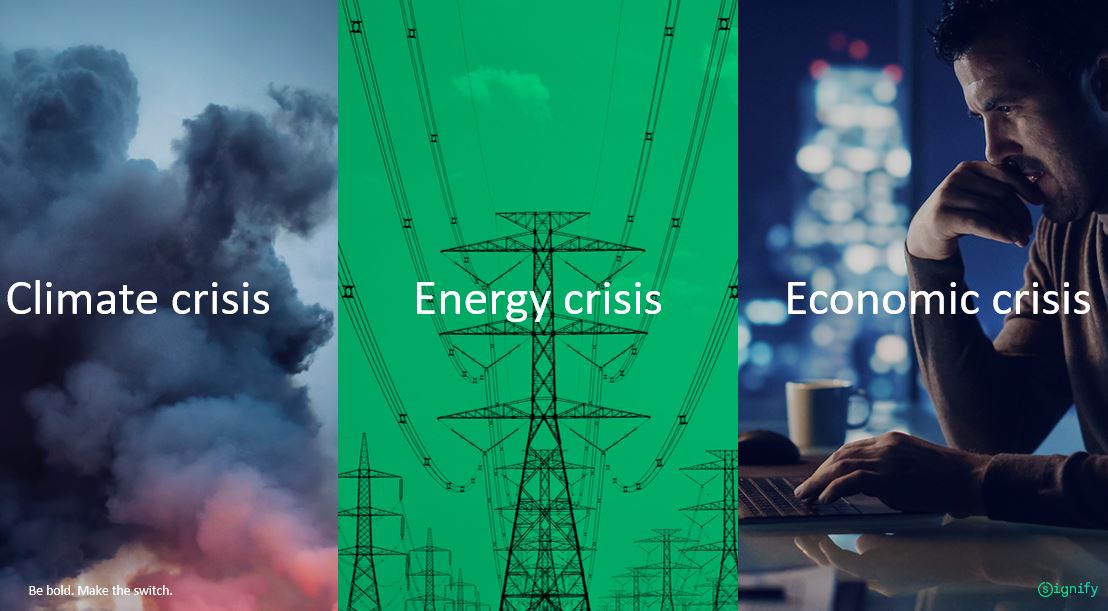Switching to LED lighting can have a major impact and the time to act is now
Today, the world is facing what might be called a trilemma: the concurrent climate, energy, and economic crises. Economies are struggling with multiple impacts, businesses are dealing with quickly increasing costs and supply chain disruptions, and consumers are coping with inflation and skyrocketing energy bills.
Although the intensity of these crises varies in different parts of the world, the entire world is affected, and countermeasures must be taken urgently. Energy demands continue to increase drastically, and action must be taken now to mitigate the effects. In many countries, the grid is at or nearing capacity. In Europe, 25% of electricity is generated by gas — a precarious situation, given the uncertainties caused by politics and conflicts in the east.
The bottom line: the world needs to double the speed of action in every area of the global energy transition to reduce consumption of and dependence on fossil fuels. Among other things, this means doubling down on energy-efficiency systems and retrofits, renewable and nature-based energy sources, EVs, and smart systems that can produce more with less.
Energy-efficiency initiatives will play a decisive role in both the short term and the long term. In the short term, energy-efficient retrofits and systems can help governments, businesses, and consumers quickly and effectively reduce energy consumption. In the long term, such initiatives will create the connected infrastructure required for achieving net zero ambitions.
The accelerated switch to connected LED lighting can jumpstart the necessary doubling of efforts and impact. Signify has made this call to action many times before, but now we need actions, and we need them yesterday.
Accelerating the switch to LED
Lighting accounts for 13% of all electricity usage worldwide. By moving to energy-efficient LED lighting, lighting-related energy consumption could drop to 8% globally by 2030, even while the total number of light points continues to rise. It’s a fast, non-disruptive intervention that can act as a frontrunner for deeper and more complex renovations. Given that two-thirds of professional light points around the world are still conventional, the energy-savings potential of switching to LED lighting is enormous.
LED lighting reduces energy consumption significantly over conventional alternatives—well over 50% in most cases. When connected and properly managed, monitored, and controlled, LED lighting systems can push energy reductions to as much as 80%, producing startling results. In addition to enhancing efficiency, connecting LED lighting to a network and introducing sensors and controls lays the groundwork for digital smart building and smart city frameworks that bring together multiple functions and applications.
If businesses and cities converted all of their conventional light points to LED or connected LED, global electricity savings could total as much as 1,132 TWh per year, equivalent to the annual electricity consumption of 494 million households. The switch would save a total of €177 billion per year in electricity costs while taking more than 553 million tons of CO2 out of the atmosphere. That’s equivalent to the amount of carbon that 25 billion trees could sequester in a year.
The results can be significant even on the local level. In a mid-size European city of 200,000 inhabitants, for example, switching all conventional lighting to LED could save over 78,000 MWh, over €26 million, and over 18,000 tCO2 per year.
The full article was originally published by www.cio.com and can be read here
Topics: Streetlights, Smart cities, smart streetlights

